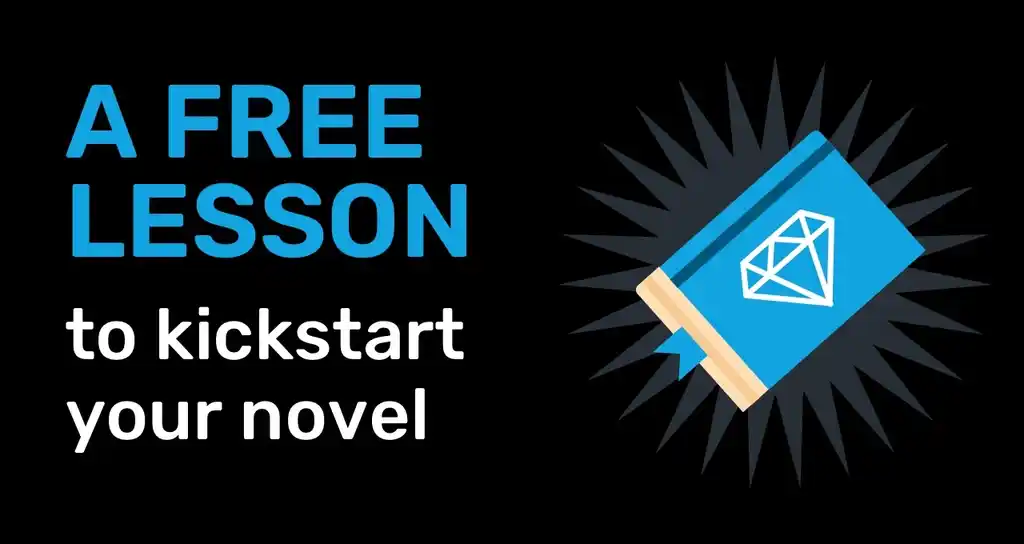This transcript has been lightly edited for clarity
That is the question.
It's a question I talk about a lot with my editing clients. Rhyming picture books can be so much fun and there is a huge variety within rhyming picture books. There are really simple ones like Brown Bear, Brown Bear. And there are more expansive, complex rhyming picture books, like Ada Twist, Scientist.
I spend a lot of time thinking about rhyme. Not just as a writer, but also as an editor on Reedsy and when I teach writing classes. Recently I took what I learned from discussions with my clients and my students and I launched an on-demand class about rhyming picture books that you can find on Thinkific and if you're a subscriber on Skillshare.
Should your picture book rhyme?
What I wanted to do today was tackle a very important chunk of that class: how to decide whether your picture book should rhyme. Here's what we will cover — this is what I talk about with my editing clients and students who send me rhyming picture books.
- We're going to talk about how traditional publishing gatekeepers perceive rhyming picture books (Very important for really those of you who want to traditionally publish, but also self-publishers).
- Key criteria for deciding whether a book should rhyme.
- Options for playing with sound in your book with or without rhyming.
Publishing’s view on rhyming children’s books
The vast majority of my students and editing clients want to publish their books eventually, whether that's traditional publishing or self-publishing. And I see some in the chat about folks thinking about publishing and maybe some folks who have already self-published, so we're going to cover both approaches.
When you self-publish, you do have more freedom. But you are still going to come up against some gatekeepers at libraries and schools and bookstores, and their views are shaped by the books put out by traditional publishers. So you still have to kind of pay attention to what's going on in the traditional world.
We're going to start by diving into two common and funnily conflicting misconceptions about how the publishing world, the traditional publishing world, views rhyming picture books. Y'all ready for a game of true or false?
True or false? All picture books have to rhyme.
Some people think this. What do you guys think? I'm looking at the chat, seeing if there's any, anyone want to chime in. True or false?
False!
Examples of picture books that do not rhyme

There are many wonderful picture books published every year that do not rhyme. So you do not have to rhyme. And here are some examples of successful, recently published picture books that do not rhyme.
Just a quick note, when I look at the current publishing market — either to put together something like this or to look at the marketability of a client book — I do not look at books that were published by people who were famous before they published their books. Example of that, Jimmy Fallon has a bunch of picture books out, and Jimmy Fallon and other celebrities can just get away with things that mortal humans cannot. There are some famous authors in here. Jacqueline Woodson, who wrote The Year We Learned to Fly is famous, but she's famous as a writer. She's not famous because she's an actress. As far as I know.
So just to talk a little bit about each of these books, The Year We Learned to Fly by Jacqueline Woodson, illustrated by Raphael Lopez, was published in 2022. And this one is free verse, which we'll talk about more later.
The Sour Grape by Jory John, illustrated by Pete Oswald. This is part of the Bad Seed series. It is so funny, so funny. This one was published in 2022, and it's more of a typical prose book, which is normal sentence structure and a lot of dialogue. When there is a line break in a prose book, that is normally because of the design and what physically fits on the page, and not because the author wrote it as a poem.
The last one, really cute, had to include it, award-winning — see those gold stickers? — It's Hot Dog by Doug Salati, and I would also call that free verse, but the lines are much shorter than The Year We Learned to Fly, which was published in 2022.
All right, let's move on to the next question. A lot of people think agents and editors hate rhyming books and that it is very hard to get a rhyming book published. So this one kind of conflicts with the beginning. Do we think this is true or false?
True or false; agents and editors hate rhyming books.
This is (surprise, surprise) also false.
There are many wonderful books published every year that do rhyme, including, of course, some of mine. I think they're wonderful. People love rhyming books. However, I do want to add a little bit more nuance to this conversation.
It is true that in order to get a rhyming book traditionally published — and we're talking about going to agents and editors here — you need both skill and luck. And I would say that's true for getting any book traditionally published. It's just not easy. It's a very competitive market. Some agents and editors do not like to work on rhyming picture books because editing rhyme takes a specific skill set that not everyone has, or wants to gain.
So agents and editors see a lot of really bad rhyming picture books come through their inboxes, and it's actually rare to see a well-written one. So they can be a little hesitant. They might see something that has promise, but know that they don't have the skills to help it reach its full potential, so it can be trickier.
A lot of the rhyming manuscripts submitted by newer writers are clunky and forced. Many newer writers, and I actually did this myself, they don't know, or they try to deny, that rhyming picture books also need to have a defined and regular rhythm. For me, and for many writers, the hardest part of writing in rhyme is not actually the rhyming — the rhyming can be the easier part.
The hardest part is actually getting the rhythm right. We're not going to have a ton of time to cover rhythm today but you are ahead of the game just knowing that you have to consider rhythm when writing a rhyming book. We are going to talk about it for a quick minute before we get to our examples of successful rhyming books. Basically rhyming picture books need a set pattern of stressed and unstressed syllables.
When I say stress — what is a stressed syllable? I mean the syllable that you emphasize. When you say puppy, the Pup part is stressed — and I'm talking about American English here, there are regional differences which makes the entire thing more complicated, but everywhere you would say Pup and puppy. Mot is stressed in motor. And Pon and Tail are stressed in Ponytail.
So every stanza in a rhyming picture book has a set rhythm of stressed and unstressed syllables. People sometimes do do know about counting syllables in every line, and they'll come in thinking that as long as every line has the same number of syllables, you're okay. But the number doesn't actually matter if the pattern of the stressed syllables isn't consistent.
Trick Or Treat, Smell My Feet example.
I based my picture book, Trick or Treat, Bugs to Eat, you could probably guess, off the rhyme Trick or treat, smell my feet, and using a folk rhyme or nursery rhyme as a base for your book's rhyme scheme and rhythm scheme can be such a helpful tool because we know that these rhythms get stuck in people's heads.
We know the rhythm works. So why not use something that you already know that works? When I first got the idea for this book, I started by looking at this old folk rhyme.
“Trick or treat!
Smell my feet!
Give me something
good to eat!”
Okay, I stressed them here. So, we have trick and treat, smell and feet, give and some, and then good and eat. Those syllables are stressed. So, just practicing analyzing this can be very helpful. All right.
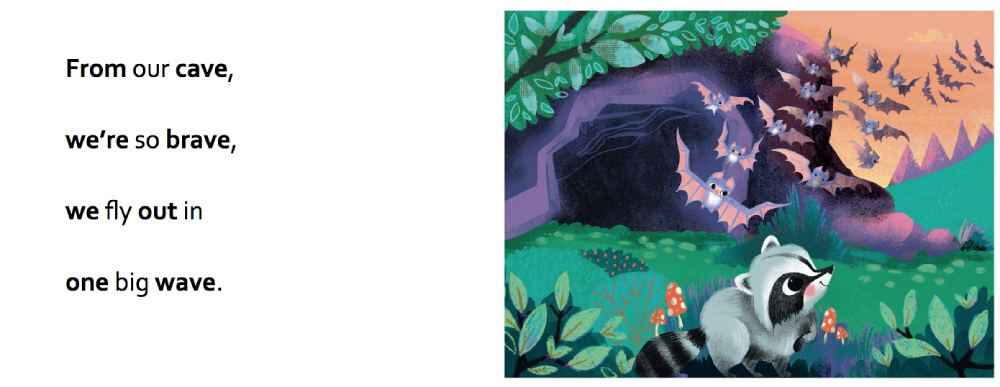
What I did is I swapped out kids trick or treating for candy and I wrote about bats trick or treating for bugs. I already went ahead and bolded the stressed syllables here and you'll notice that it's the same as the original. So, and I'm going to read it in a really exaggerated way.
From our cave
we're so brave,
we fly out in
one big wave.
You'll notice here that not all of these lines have the exact same pattern. The third line ends in an unstressed syllable. And actually, and it also doesn't rhyme with the rest. And as a writer, that third line was the saving grace. for me because it is so hard with these teeny tiny short stanzas to find three rhyming words. So you can have variation. I would just recommend keeping that variation the same for every stanza.
And of course there are exceptions. Some rhyming books do not have a perfect rhythm. But normally, when you read them, they still sound really great. And I don't know how those people make their books sound great without rhythm, but especially for starting out, I highly, highly recommend being pretty strict about your rhythm.
Examples of picture books that do rhyme
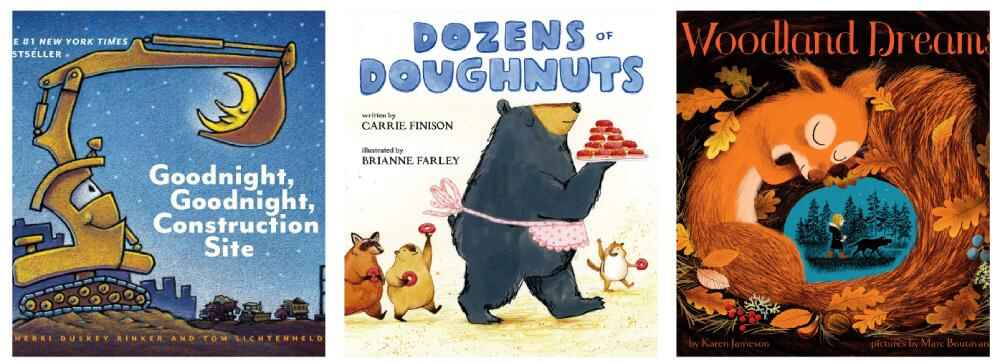
So on to the successful rhyming books part — when they are done well, rhyming books do get published all the time.
— I saw flying by in the comments that many publishers, from Jay Sanders, currently accepting picture books, specifically stating that they will not review rhyming books. I wouldn't know that, I don't know that I would say many publishers, but I do see agents saying that, and I have seen, for example, when you go to get a critique from an editor or an agent at a conference, I have seen people say, No rhyme. And that's just because of what I discussed, that you have to have a specific skill set to be able to edit rhyme. And because there are just a lot of bad rhyming books coming in. But, here are three examples that show you that rhyming books do get published. Good Night, Good Night Construction Site by Sherry Duskey Rinker, illustrated by Tom Lichtenheld. That was published 2017, which is a little further back than I like to go when I'm looking at the recent market, but these books are so popular and there are so many books in the series that are still getting published. Wonderful rhyming books. Dozens of Donuts, a little newer by Carrie Finison, illustrated by Brianne Farley. It's super cute and funny. And Woodland Dreams by Karen Jameson, illustrated by Mark Boudivant. And that was published 2020 also, and it is more lyrical and sweet.
Should my Picture book rhyme?
So my point in talking about these successful books is there's no rule in publishing about whether you should rhyme. You have to make the decision book by book. In fact, I have gone back and forth with my literary agent on some of my books. We have tried turning rhyming books into prose, but I would say that is rarer, just because of how difficult it can be to write in rhyme.
Criteria for whether to rhyme
- Simple
- Flexible
- Joyful
Three key criteria. Rhyming books should ideally be simple, flexible, and my favorite, joyful. Well, let's, let's move on and talk about why.
Simple
Alright, simple stories that don't involve complicated plots or ideas are much easier to tackle with rhyme. You do not — and I see this all the time — you do not want to end up writing three stanzas to explain something that has, could have been explained in one sentence of prose.
I would also watch out for stories that include long words or lots of technical terms by default. I did actually have to find a way around that in Trick or Treat Bugs to Eat — and I'm going to talk about that. I found around that, and I see this in published books, is to write a very simple rhyme about the topic, and then at the back of the book include non fictional backmatter at the end of the book in prose. So I'll show you how I did this in Trick or Treat, Bugs to Eat, and the topic, with the topic of echolocation. This is the rhyming part of the book and it's a stanza about echolocation.
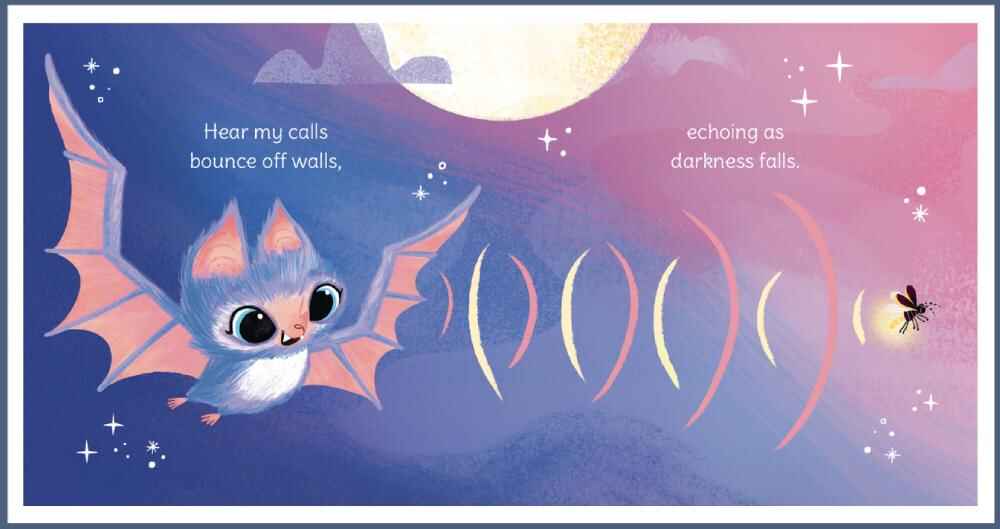
Hear my calls
bounce off walls,
echoing as
darkness falls.
The illustrator Nancy Leschnikoff helped me out with that illustration, but that wasn't quite enough to incorporate some of the science that I wanted to talk about in the book and explain this topic clearly. So, in the backmatter, this is one sentence of a long backmatter section, and it is:
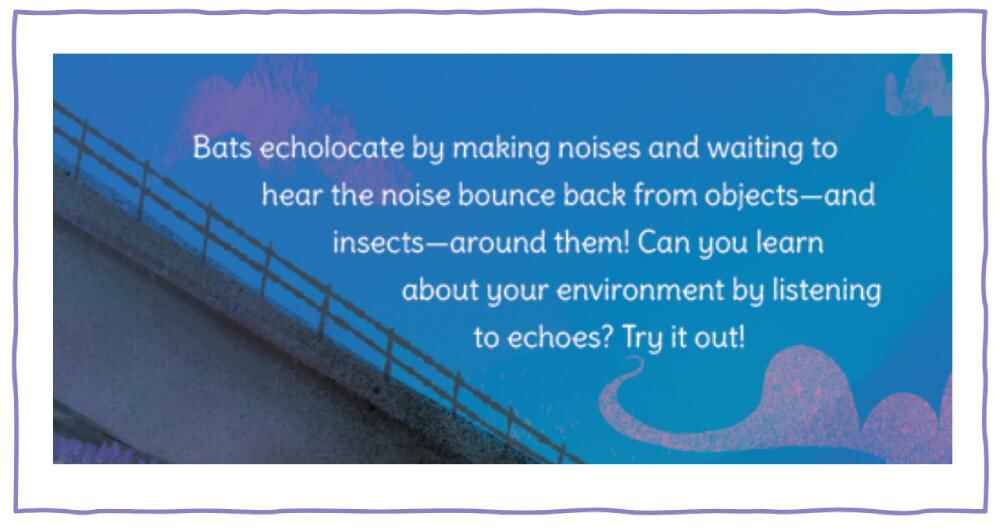
Bats echolocate by making noises and waiting to hear the noise bounce back from objects — and insects — around them. Can you learn about your environment by listening to echoes? Try it out!
And then I ask all the kids to say echo, echo, and of course nobody can hear their echoes because there's 30 other kids in the room and it's really cute and fun.
So there are a couple spreads in the back of the book with back matter along those lines. So when you're writing a rhyming book, if you are tackling a complex topic, don't feel like you need to explain everything in the rhyme. You can write in simple prose at the end of the book.
Flexible

Flexible stories allow you to change the book to fit the rhyme and rhythm scheme as needed. So here are some examples of flexible books. Trick or Treat, Bugs to Eat in that book there were some types of bugs I really wanted to include, but I couldn't because I couldn't figure out how to work them out. And the rhyme and rhythm including — and I will forever mourn not being able to write about mosquitoes and rhyme it with burritos because it just didn't work with the rhythm. So an ideal topic for a rhyming book lets you swap stanzas in and out without causing a ripple effect of problems for the entire plot of your book.
So, list books — these are three examples of list books. They are a great example, Trick or Treat, Bugs to Eat is basically a list of what bats eat. Mama Dug a Little Den, and that one's based on the rhythm of Mary Had a Little Lamb by Jennifer Ward.
That one's a list of animals that make dens, and Goodnight, Goodnight Construction Site. That is really basically a list of construction equipment and describing them getting sleepy. So you'll see this a lot in rhyming books, that the plot is fairly simple, it can be a list. That's not the only way to be flexible.
Joyful
Joyful stories are great for rhyming books because rhythm and rhyme tend to create a bouncy, happy feel. You can probably tell from listening to me that that is very fun and natural for me. You can definitely succeed with a lyrical sweet rhyming book that is bittersweet and touches on deeper subjects. I would just be wary of trying to write a rhyming book about something very complex or touchy, like bullying or bodily autonomy, or anything really sensitive.
When you are explaining sensitive subjects to kids, every single word needs to be chosen for how appropriate it is to explain that subject to that age group. And rhyme and rhythm limit your word choice just by nature — you can be really talented, but some things just don't rhyme.
So rhyme can make it much harder to talk about a difficult topic. And then you have the tone. So if you want to write a book that includes bullying, let's say, it could end up sounding like you're writing a fun, rhyming romp about a kid who was bullied, and that is probably not what you were going for.
Every rhyming book that we've talked about so far has been joyful. I would say that Mama Dug a Little Den and Woodland Dreams are more on the sweet side, but they're definitely still happy books. All right, so just a recap here.
When you are deciding whether to rhyme or not, ask yourself, is your idea simple, flexible, and joyful?
If the answer is no, or you are pulling your hair out trying to make that book rhyme, maybe it should be written in prose.
Free Verse

That means that you will use poetic line breaks, but the book will not rhyme. I suggest this method for more serious or lyrical books like You'll Find Me, which grapples with grief, or Eyes That Kiss in the Corners, which talks about a little girl who realized that her eyes look different from her friends.
We're going to talk about an example from Eyes That Kiss in the Corner, and that's by Joanna Ho and illustrated by Jung Ho.
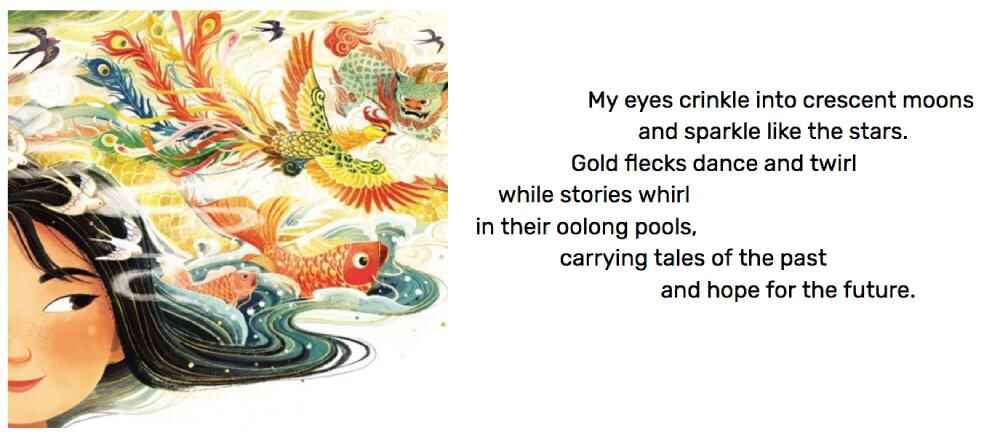
“My eyes crinkle into crescent moons
and sparkle like the stars.
Gold flecks dance and twirl
while stories whirl
in their oolong pools,
carrying tales of the past
and hope for the future.”
So there are, you'll notice, there are two rhyming lines there, twirl and whirl, but the book does not have a consistent rhyme or rhythm scheme. And you can look at the line breaks and see how they enforce a more poetic rhythm where readers have to slow down and consider each line more carefully, whether they are listening to the book, reading it aloud, or looking at what it, how it appears on a page.
So keep in mind that if you do use free verse, you don't have to write in a regular rhyme and rhythm, but it should still sound good. I would also recommend avoiding too much rhyme at the end of your lines because you don't want people to think that you tried to rhyme and you just failed and you weren't good at it.
So every now and then, it's okay, but you want to make sure that you, it's clear that you're aiming for free verse and not rhyme. So you can still play with sound to make your book lovely to read aloud, and we're going to talk about that. Let's be fun.
Wondering what a children's illustrator costs?
Take our quiz and we can give you an estimate!
Common ways to play with sound
- Alliteration
- Repetition
- Onomatopoeia.
Many writers want to have their books rhyme, because they think that is the best way to make a book that is a fun read aloud. Now, yes, I love rhyme for the readability — the read aloud ability — but you can totally play with sound in a book that does not rhyme. And honestly, the end rhyme is not where the sound work stops in a rhyming book. It's very far from it. So, let's talk about alliteration, repetition, and onomatopoeia.
Alliteration
Let's go back to Eyes That Kiss in the Corners since we just talked about it.
“My eyes crinkle into crescent moons
and sparkle like the stars.
Gold flecks dance and twirl
while stories whirl
in their oolong pools,
carrying tales of the past
and hope for the future.”
Alliteration is when sounds repeat in words that are close to each other. And there's many different kinds of alliteration vowels and different types of words, but all we need to know is that they sound similar. So note here, crinkle and crescent, then sparkle and stars. Then we have some examples of vowels creating a beautiful alliterative sound with Oolong and Pools. Not quite the same sound. Oolong is a very unique sound, but it sounds beautiful together.
We can also look at alliteration in a rhyming book. Goodnight, Goodnight, Construction Site.
The sun has set. The work is done;
It's time for trucks to end their fun.
So one by one, they'll go to bed
To yawn and rest their sleepy heads,
Then wake up to another day
Of rough-and-tough construction play!
So, here we can see sun and set, then time and trucks. We also see some internal rhyme — which means a rhyme within a line and not just at the end of it.
So, who can spot the internal rhyme?
It is 'rough-and-tough'. And I don't know if you noticed, but I had a really fun time reading that aloud. You could probably also call one by one internal rhyme, just with that repetition there. It all connects.
Note how the rhythm throughout this page is also very consistent in a pattern of unstressed syllable, then stressed syllable.
“The sun has set, the work is done.”
So there's so much work done here to make this sound amazing, aside from the end rhymes. And that is the trick of writing rhyming picture books that separates a newbie from a pro.
Repetition
I've tried to use newer books here, but I'm going to go for an older one because Robert Munsch is just amazing with repetition. I feel like he is just daring himself to come up with how many elements he can repeat in one book, and most of his books do not rhyme. So we'll talk about I Have to Go.
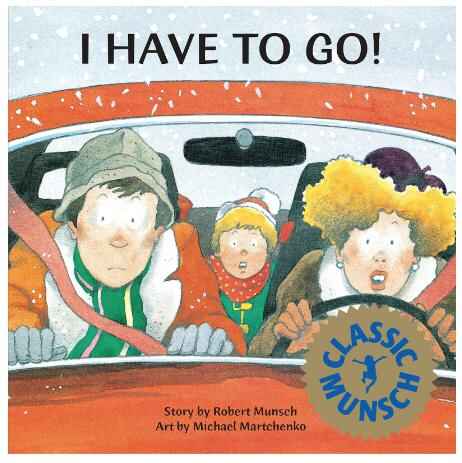
Like many Munsch books, it's illustrated by Michael Marchenko, and I will just read this aloud.
One day, Andrew's mother and father were taking him to see his grandma and grandpa. Before they put him in the car, his mother said, “Andrew, do you have to go pee?”
“No, no, no, no,” said Andrew. “I have decided never to pee again.”
So they put Andrew into the car, fastened his seatbelt and gave him lots of books, and lots of toys, and lots of crowns, and drove off down the road — VAROOMMM! They had been driving for just one minute when Andrew yelled, “I HAVE TO GO PEE!”
So there's so much to love in this book. It's so funny. But we're going to zoom into the repetition. First, Andrew repeats the word, no. He does this four no speech, three times in the book. No, no, no, no!
You'll also notice that lots of repeats when we're listening, when we're listing what Andrew gets in the car. So there's definitely a tension in picture books between economy of language, because we have such a low word count for these, and fun repetition, which of course can increase the word count.
Here, the repetition adds to the fun sense of chaos. Maybe it's fun, maybe it's not — that most parents can recognize from a car trip. Now, what we can see in the short amount of time that we have here is that this basic sequence, I don't have to pee, I do have to pee, repeats in three different situations throughout the book until the funny twist at the end.
Using repetition like that, either on the page or throughout the whole book, helps get kids involved in reading because it builds a sense of anticipation for what comes next and they can also know what to say and help you read the book aloud. And we're going to talk about this more, but notice that there's onomatopoeia. Sounds like VROOM.
Repetition in rhyming books
So, rhyming picture books by their nature often have a repetitive structure. The rhythm repeats and, of course, rhyme is a form of repetition, repetition of a sound. So, I do want to note that sometimes repetition can be challenging in a rhyming book. Where I see folks getting into trouble is repeating one line — like a refrain — multiple times in a manuscript and then trying to come up with a different end rhyme for that same line multiple times. It's very limiting.
So if you have a repeated, a repeated line in a rhyming book, consider either doing a repeated couplet. So you have two lines that are getting repeated, and they rhyme with each other. Or you can put your repeated line all by itself so it doesn't have to rhyme with anything. That's pretty common.
Here's an example in my book that's coming out — you guys are some of the first people to see it. Or see this tiny snippet of it. This is from Call Your Mother. And here's an example of the structure I use repeated throughout the book.
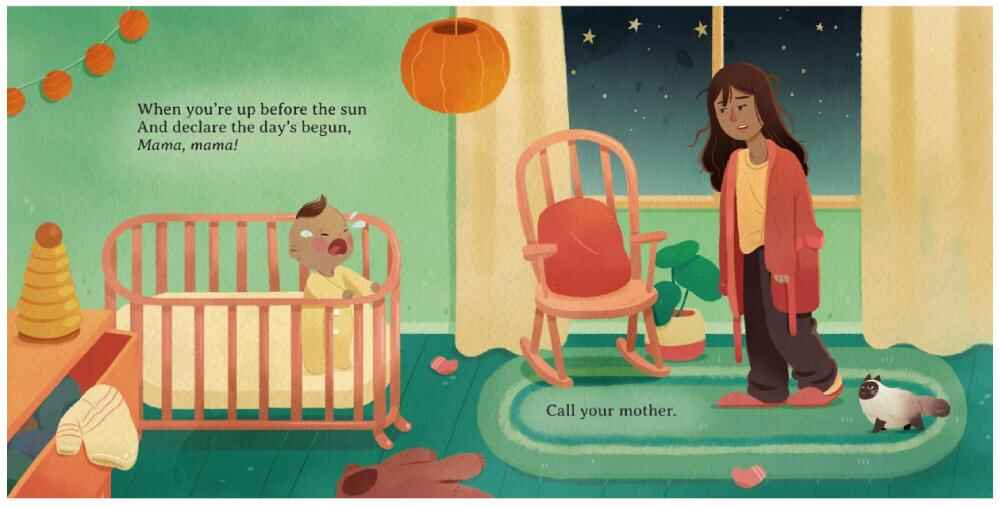
When you're up before the sun
And declare the day's begun,
Mama, mama!
Call your mother.
Every page has a rhyming couplet — dialogue from the kid, and then the line, Call your mother. And I do have a twist at the end, which you'll have to read the book to find out. So you can get creative with repetition in a rhyming book, don't feel like you have to have every single line rhyming. You can play with the structure and try to make your life easier and not harder.
Onomatopoeia
All right, so I'm going to use another classic book to talk about Onomatopoeia because I love how this one combines repetition and sound. We're Going on a Bear Hunt is so simple, it's so repetitive, it's so fun to read that it seems like it should be a rhyming book, but if you look at it, it actually doesn't rhyme.
So what is onomatopoeia? Basically, it's any word that's used to recreate a sound, and kids love this. It's really fun to read aloud, fun to listen to. So I'm going to read this segment to you:
We're going on a bear hunt.
We're going to catch a big one.
What a beautiful day!
We're not scared. Uh-oh! A river!
A deep cold river.
We can't go over it.
We can't go under it.
Oh no! We've got to go through it.
Splash splosh!
Splash splosh!
Splash splosh!
Wow, reading that aloud, I'm like, I need a drink of water, because you can really hear all that S's coming through, sounding like a river. And that is the most obvious onomatopoeia, splash, splosh — the family is going through a river. Uh-oh! could also be called onomatopoeia or perhaps just dialogue same way, same with Oh no! — just make it more fun to read a lot.
So the book as a whole has this family trekking through several obstacles following the same exact structure with different sounds such as squelch, squirch for mud, and woo, woo for a snowstorm.
And at the end of the book the family finds the bear. And then they are the ones who get chased by the bear and they get chased back through every single obstacle with the onomatopoeia repeating again and it just makes the book so much fun to read aloud.
Key Takeaways
I hope I have helped guide you in deciding whether your book should rhyme. Whether you rhyme or not, I hope you have lots of great ideas for playing with sound, and here are just a few key takeaways I want you to remember.
- Picture books don’t have to rhyme
- If they rhyme, they need to have rhythm
- Rhyming books should be simple, joyful, and flexible
- Any book can use alliteration, repetition, and onomatopoeia to play with sound
So if this webinar has you hooked on rhyme, I have that full on-demand class that I mentioned on how to write rhyming picture books. And in that class I walk through how to analyze rhythm and rhyme, and I take a deep dive into what you need to know to write excellent rhyming picture books.




